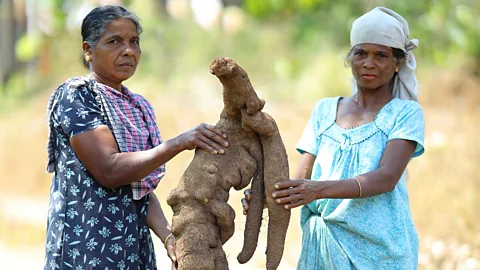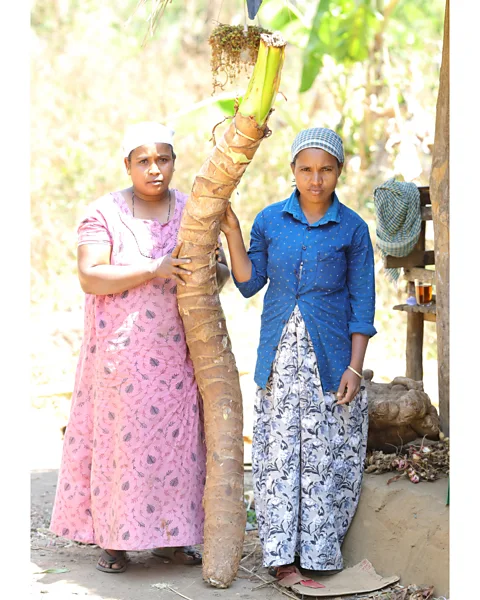From BBC News
By- Kamala Thiagarajan
Edited by - Amal Udawatta

In a tribe in southern India, a group of women are working hard to revive the country's ancient native tubers, and bring them back into everyday culture.
Lakshmi spends several hours each day digging out large lumpy and hairy yam tubers, starchy roots that grow below the soil.
Some weigh an unwieldy 5kg (11lb) and are 4.5ft-long (1.4m), almost as tall as she is. It's painstaking work, says 58-year-old Lakshmi, who goes by one name.
First, she has to cut out the thick shoot above the ground. Then, she uses shovels to dig up the earth around the buried stem and a paddle-like flat chisel to gently pry out the tuber. She uses her hands to dig the tuber out of the ground to avoid damaging its delicate roots. When the tuber finally emerges from the ground, it is the colour of the earth, and holds the promise of spring, she says.
Lakshmi, who lives in the Wayanad district in the southern Indian state of Kerala, isn't working alone. She's part of an all-women group called Noorang, short for Nuru kilangu, a popular local variety of tuber.
 Sai Krishan, Thirunelly Tribal Special Intervention Programme
Sai Krishan, Thirunelly Tribal Special Intervention ProgrammeThe Noorang members all belong to one of Kerala's oldest indigenous tribes, the Vetta Kuruman, a nomadic community of hunters and food gatherers. They are on a mission to save the kilangu, which means "tuber" in Betta kurumba language, a mix of the South Indian languages of Kannada and Malayalam. These ancient tubers have grown on their land for centuries.
As a child, Lakshmi foraged for food in the forests, gathering edible roots, leaves, honey and fruit." [The kilangu] at the time, was a substantial meal in itself and there were so many varieties that we never got bored," says Lakshmi. "We would have different kinds of yams and sweet potatoes for at least one meal a day. My family would eat it boiled, steamed and roasted. It's a vital part of my childhood memories."
But tubers are no longer a dietary staple among tribal communities in Kerala due to their rapidly changing lifestyle and eating habits. Younger people who have ready access to a wide variety of other foods, especially rice and wheat, no longer consider the tubers that once nourished their ancestors as anything special, says TV Sai Krishnan, the coordinator of the Thirunelly Tribal Comprehensive Development Project in Wayanad, which focuses on the wellbeing of tribal people in the state.
Comments
Post a Comment